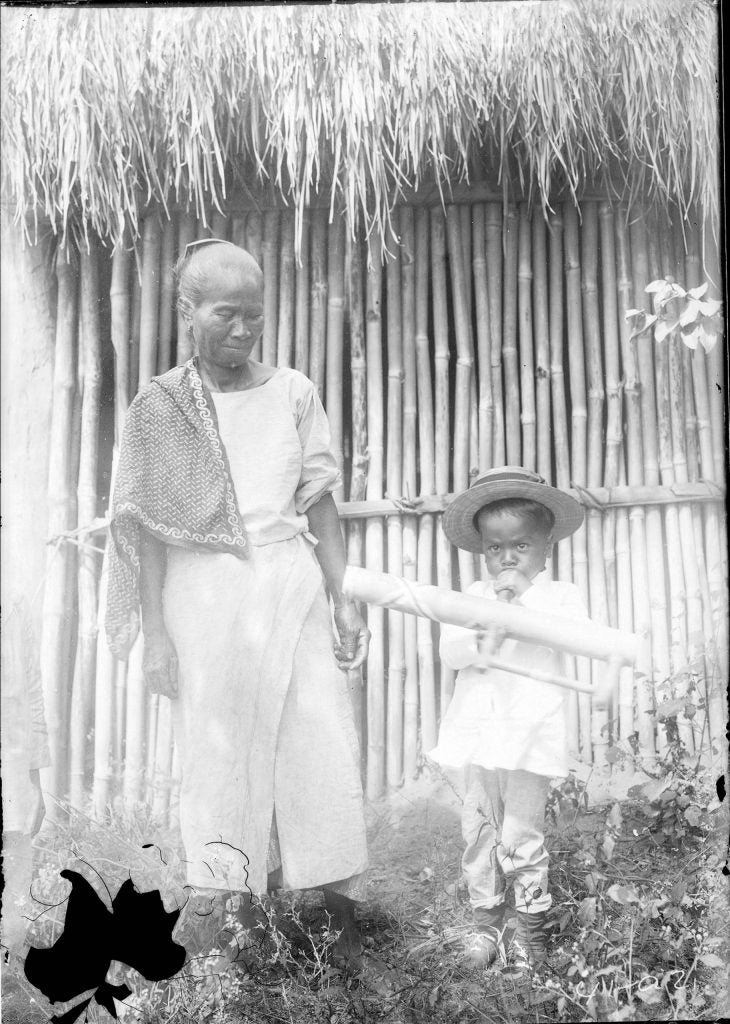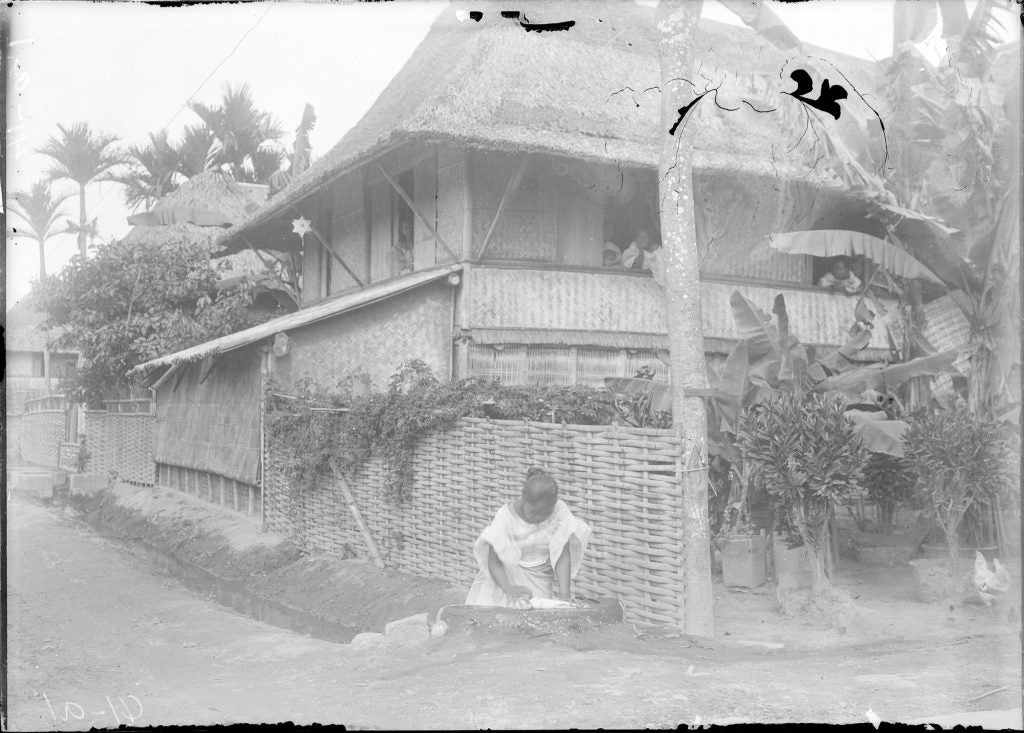by Alyssa Caldito
These two photos display a young Kapampangan boy and his mother, as well as a young Kapampangan woman scaling fish outside of her home. These photos were taken in Dolores and Angeles, both cities in the province of Pampanga, Philippines. The Kapampangan people live in the plains of central Luzon, north of Manila, and make up one of the largest ethnic groups in the Philippines.
Taken in the year 1900, shortly after the Spanish-American War, these photos capture a unique moment in time for the Kapampangan people. With a shift in colonial rulers from Spain to the United States, the Kapampangan community was divided in its response: elites were largely in favor of American Occupation as a way of opening up means of industrialization, while peasant farmers opposed American occupation in fear that they would lose their jobs to seasonal migrant workers. During this time, Americans were also in deep debate over whether or not to occupy the Philippines. Those for occupation argued that annexation of the Philippines would be a rare economic and strategic political opportunity. Meanwhile, those against occupation feared that colonizing the Philippines not only went against the democratic ideals of the US, but also opened up the possibility of native Filipinos becoming US Citizens.



